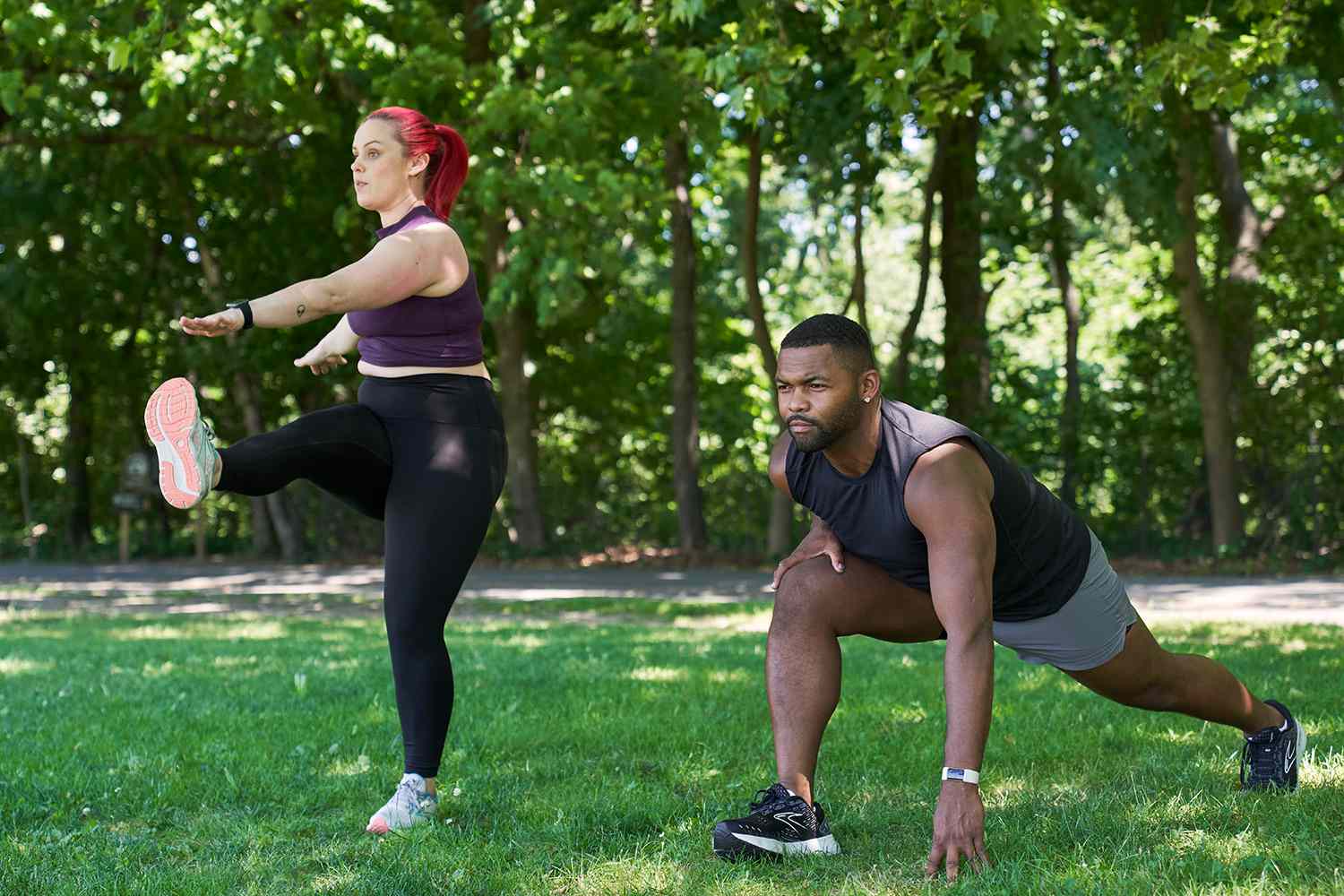Taking rest days is often overlooked but is crucial for your fitness journey. Incorporating regular rest days allows your body to recover, rebuild, and ultimately perform better. Without enough time for recovery, you risk facing physical fatigue, mental exhaustion, and even injuries that can derail your progress.
Your muscles need time to repair after workouts, and this is where rest comes into play. During rest days, you not only help your muscles recover but also support hormonal balance, which is vital for optimal performance. Paying attention to your body’s signals and giving it the necessary breaks can lead to improved overall well-being.
Understanding the importance of both active and passive recovery can help you maximize your fitness efforts. With the right approach to rest days, you can maintain motivation and enjoy your workouts more while making steady progress towards your fitness goals.
Key Takeaways
- Rest days support muscle recovery and hormonal balance.
- Active recovery can enhance your overall fitness journey.
- Proper nutrition and hydration are important for effective recovery.
Understanding Rest Days and Recovery in Training
Rest days are crucial for athletes and anyone engaged in regular exercise. They allow your body to heal, repair muscles, and prevent injuries. Knowing how to effectively incorporate rest and recovery into your training can enhance your performance and well-being.
Defining Rest and Recovery
Rest refers to the time you take away from strenuous activities. Recovery is the process where your body heals and rebuilds itself after workouts. During rest periods, especially when you sleep, your body undergoes vital biological processes.
These processes include:
- Repairing muscle tissue damaged during workouts
- Reducing fatigue by replenishing energy stores
- Improving mental focus for future training sessions
Understanding these concepts is key to maximizing the benefits of your workouts.
The Role of Rest Days in Muscle Repair and Growth
Rest days significantly contribute to muscle repair and growth. After intense workouts, microscopic tears occur in your muscle fibers. Without proper rest, these tears may not heal effectively.
During rest, your body utilizes nutrients and proteins to rebuild tissues, leading to:
- Increased strength from rebuilt muscle fibers
- Improved endurance as your body adapts to previous stress
Active recovery activities, like gentle stretching or low-intensity exercise, can promote blood flow. This helps remove waste products from your muscles and supports healing.
Overtraining Syndrome: Recognizing the Signs
Overtraining syndrome occurs when you push your body too hard without adequate recovery. It can lead to physical and mental exhaustion, impacting your performance.
Signs you may be overtraining include:
- Chronic muscle soreness that doesn’t improve
- Decreased performance, such as slower times or weaker lifts
- Fatigue or lack of motivation for workouts
Listening to these signs is essential. Acknowledge when your body needs a rest day to prevent ongoing issues. Balancing training and recovery should be your priority for long-term progress.
The Science of Rest: How the Body Heals
Rest is crucial for your body to recover from workouts and daily activities. Understanding how rest aids recovery can help you optimize your fitness routine and improve your overall health.
Muscle Soreness and Recovery Processes
Muscle soreness is common after intense exercise. This soreness, known as delayed onset muscle soreness (DOMS), occurs due to tiny tears in muscle tissue. When you rest, your body starts to repair these tears.
During recovery, inflammatory cells rush to the damaged tissues, which helps initiate healing. Rest days give your muscles time to use these cells effectively, repairing and strengthening them for the future.
Incorporating light stretching and movement can also aid this process without disrupting recovery. When muscles aren’t pushed too hard, they rebuild stronger and more resilient.
Energy Stores and Protein Synthesis
When you exercise, your body uses glycogen, a form of stored energy found in muscles. After workouts, these stores need replenishment. Rest allows your body the time to restore glycogen levels, preparing you for your next session.
During recovery, protein synthesis occurs. This is the process where your body builds new muscle proteins to repair and strengthen muscle fibers. Ensuring you consume enough protein supports this process.
A diet rich in protein can enhance recovery by fueling muscle growth and improving performance during workouts. Aim to include protein sources in your meals to support your energy needs.
Importance of Sleep Quality in Recovery
Sleep quality is vital for effective recovery. When you sleep, your body enters deep restorative stages that support healing processes. Growth hormone, which aids muscle repair and growth, is released during sleep.
If you don’t get enough quality sleep, your body’s ability to heal diminishes. Aim for 7-9 hours of sleep each night to optimize recovery.
Good sleep hygiene, such as maintaining a consistent sleep schedule and creating a restful environment, can further enhance the quality of your sleep. Prioritize these habits to improve your overall recovery and performance.


Active Versus Passive Recovery Strategies
Understanding the differences between active and passive recovery is essential for optimizing your rest days. Both strategies have their benefits and can be chosen based on your needs, fitness level, and how your body feels.
Benefits of Active Recovery
Active recovery involves engaging in light activities to promote circulation and help your body recover. This can include walking, yoga, or stretching. These activities increase blood flow, which aids in removing metabolic waste from your muscles.
Some benefits of active recovery include:
- Reduced muscle fatigue: Gentle movement helps dissipate muscle soreness.
- Improved flexibility: Activities like yoga or stretching maintain flexibility and decrease stiffness.
- Enhanced mental well-being: Light physical activity can boost your mood and mental focus.
Incorporating active recovery can enhance your overall performance by preparing your body for future workouts.
When to Choose Passive Recovery
Passive recovery means taking a complete break from physical activities. This is ideal when you are feeling fatigued or have just completed an intense training session. It allows your muscles and joints to rest and recover without any strain.
Indicators for choosing passive recovery may include:
- Severe muscle soreness: If you feel significant pain, take time off to allow healing.
- Fatigue: If you are feeling unusually tired, rest may be necessary.
- Injury prevention: Avoiding overtraining can help you stay injury-free.
Taking a passive recovery day is essential for allowing your body to recover fully.
Recovery Activities to Consider
Choosing the right recovery activities is crucial for your progress. Here are some options to help you recover effectively:
- Walking: A simple, low-impact way to keep moving without straining.
- Stretching: Gentle stretching can relieve tension and improve flexibility.
- Yoga: Find a restorative or gentle flow to help relax your mind and body.
Creating a mix of both active and passive recovery days can keep your routine balanced. Listen to your body and adjust your activity levels as needed for optimal recovery.
Nutrition and Hydration: Fueling for Recovery
Nutrition and hydration play vital roles in your recovery process after workouts. A balanced intake of macronutrients and proper hydration ensures your muscles repair effectively and perform at their best.
Optimizing Nutrient Intake for Muscle Repair
To help repair muscles, your body needs a mix of nutrients. Protein is crucial since it provides amino acids necessary for muscle growth and repair. Aim for sources like chicken, fish, eggs, and plant-based options like beans and tofu.
Consuming carbohydrates after exercise is equally important. They replenish glycogen stores, which fuel your body during workouts. Incorporate foods like rice, pasta, and fruits into your meals.
Don’t forget healthy fats. They assist in reducing inflammation and aiding recovery. Include options like avocados, nuts, and olive oil in your diet.
A well-rounded plate can support your recovery, leading to better performance in future workouts.
Hydration’s Role in Recovery
Proper hydration directly impacts your recovery and overall performance. When you exercise, you lose water through sweat, which can lead to dehydration. Staying hydrated helps maintain blood volume and supports nutrient transportation in your body.
During recovery, aim to drink water or electrolyte-rich beverages. This replenishes lost fluids and helps reduce muscle cramps and fatigue.
Be mindful of your hydration before, during, and after workouts.
Signs of dehydration include:
- Thirst
- Dark urine
- Fatigue
By prioritizing hydration, you support muscle recovery and optimize your performance in training.


Psychological Benefits of Rest Days
Rest days are crucial for your mental health and maintaining motivation in your fitness journey. Taking breaks helps you recover mentally and physically, enabling you to enjoy your workouts again.
Mental Health and Recovering from Exercise
Rest days significantly improve your mental well-being. When you consistently train without breaks, you may feel more irritable and anxious. This can lead to burnout, which makes it hard to stay focused on your goals.
Taking a break allows your mind to reset. You regain energy and enjoy your routine without the pressure. Furthermore, rest days give you time to engage in other activities, reducing stress and providing a broader perspective on health.
In addition, breaks prevent feelings of guilt or shame that can arise from missing workouts. Instead, you learn to appreciate the importance of balance in your fitness routine.
Rest Days to Maintain Motivation and Prevent Burnout
Scheduling regular rest days helps maintain motivation levels. Workouts can become monotonous, leading to decreased enthusiasm. By taking breaks, you allow your body and mind to recharge.
This recharging period can reignite your passion for fitness. When you feel refreshed, you return to your routine with new energy and drive.
Rest also prevents burnout. Constant training can lead to fatigue, discouragement, and a drop in performance. By including rest days, you lower the risk of feeling overwhelmed.
Make sure to listen to your body. Using this time wisely can help you stay engaged, enthusiastic, and focused on your long-term fitness goals.





